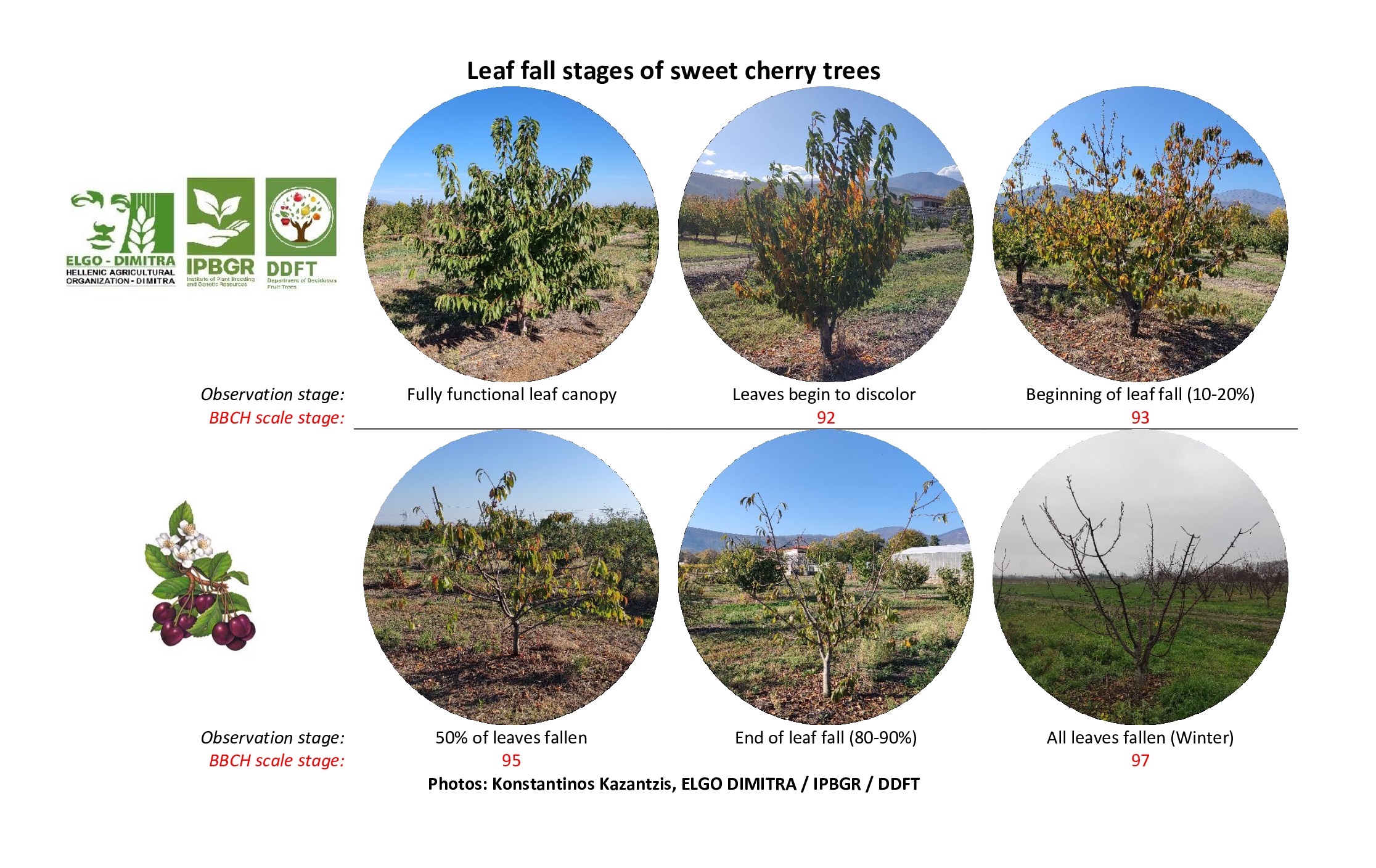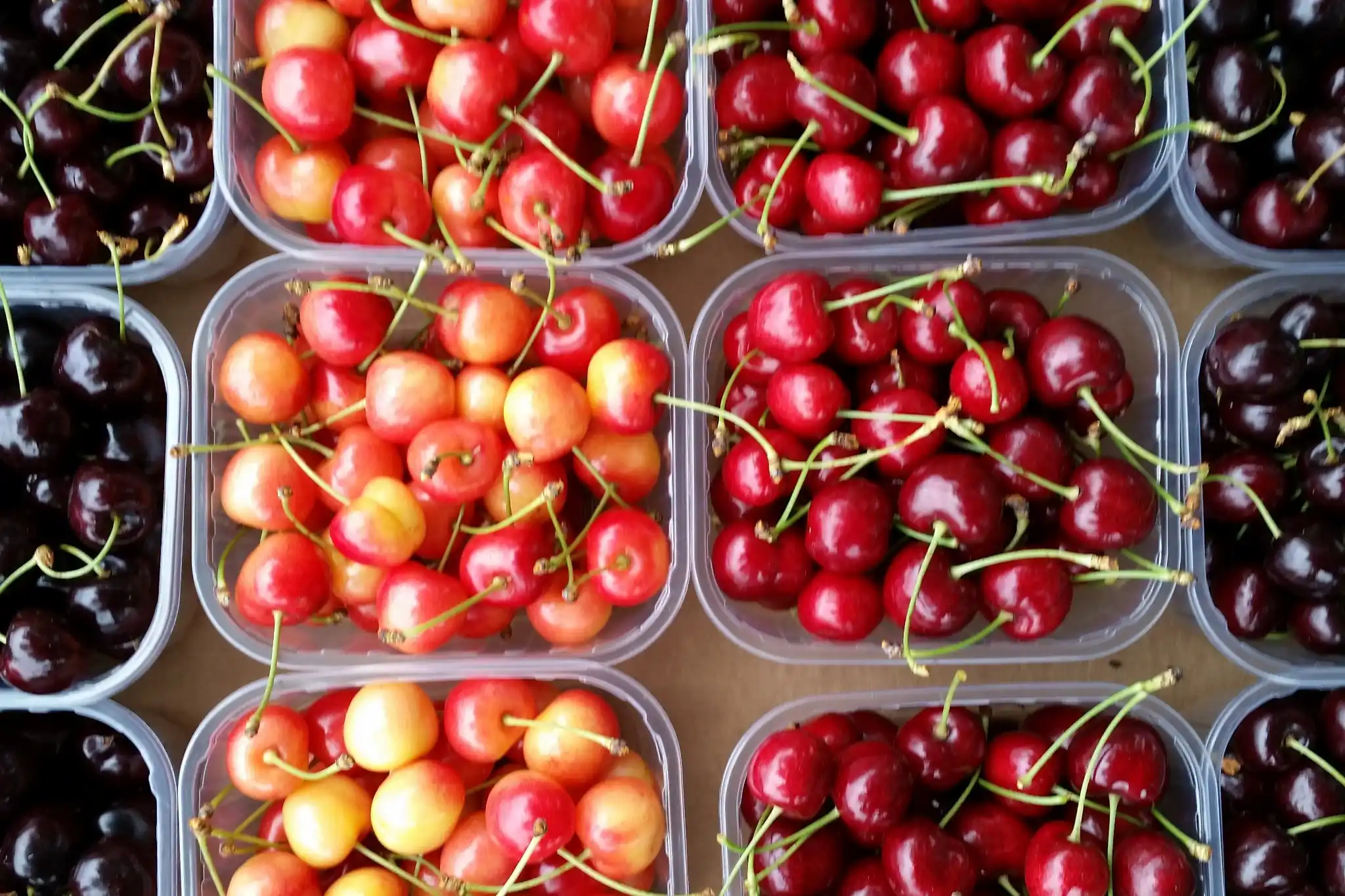In cherry, as well as other deciduous fruit trees, the process of "seasonal aging of the leaves" takes place as a reaction of the trees to the reduction of the length of the day and the low temperatures that occur during autumn. The result of the above is the fall of the leaves in a short period of 15-30 days, so that during the stage of winter dormancy the trees are completely defoliated.
As leaf senescence occurs, leaf color changes from green to yellow, brown or red, making it an easily recognized event in the life cycle of a tree. Leaf senescence is the final step of leaf development. The seasonal senescence of leaves occurs in a few phases. In the mature stage, the leaf has the ability to perform physiological activities such as photosynthesis.
During the late stage, the leaf successively ceases photosynthesis and stimulates the degradation of pigments, proteins, cell wall components, and other macromolecules, which are gradually relocated to new growth and storage organs of the tree for nutrient recycling. Lastly, the leaf is abscised from the tree. Leaf abscission from the shoots happens at specific cellular layers located at the base of the petioles called ‘abscission zones’.
Earlier studies have documented that leaf senescence coincides with the activation of ethylene biosynthesis. The role of ethylene in leaf senescence has been clearly documented in Arabidopsis, crops, and trees. Ethylene is a recognized inducer of the onset of leaf senescence. Furthermore, jasmonate stimulates senescence in concert with ethylene.
The process of leaf abscission is related with the interactions of auxin and ethylene balances in leaves and can be distinguished into three phases:
- The “leaf retention phase”, where high levels of auxin in the leaf reduce the sensitivity of the abscission zone to ethylene, keeping the leaf in its natural position.
- The “abscission induction phase”, where the reduction of auxin levels in the leaf, increases the sensitivity of the abscission zone to endogenous ethylene so the abscission process begins.
- The “abscission phase”, where the cells of the abscission zone are affected by ethylene, synthesize cell wall degradation enzymes resulting in cell separation and leaf drop.
In studies of investigating the mechanism by which leaf development affects the onset of leaf senescence, reverse genetic approaches offer the mechanistic understanding of genes and proteins that link leaf development to senescence. Techniques of transcriptome and metabolome have provided profiles on the processes of signaling, macromolecule degradation, metabolic change, and cell death.
The process of leaf senescence is controlled through the spatial and chronological controls of genes by the ethylene and other signaling pathways, transcription factors and epigenetic modifiers of DNA.
 Image 1.
Image 1.
Sources: Aalen R., Wildhagen M., Stø I., Butenko M. (2013). IDA: a peptide ligand regulating cell separation processes in Arabidopsis. Journal of Experimental Botany, Volume 64, Issue 17, December 2013, Pages 5253–5261, https://doi.org/10.1093/jxb/ert338.; Keskitalo J., Bergquist G., Gardestrom P., Jansson S. (2005). A Cellular Timetable of Autumn Senescence. Plant Physiol. 2005 Dec; 139(4): 1635–1648. doi: 10.1104/pp.105.066845; Morgan P.W. (1984). Is ethylene the natural regulator of abscission? Y. Fuchs, E. Chalutz (Eds.), Ethylene: Biochemical, Physiological and Applied Aspects, Martinus Nijhoff, The Hague (1984), pp. 231-240. W. Junk, Lancaster.; Taiz L., Zeiger E., Moller I., Murphy A. (2017). Plant Physiology and Development. 6th American edition, 2nd Greek edition, custody of issue: Thanos K., Utopia Publishing.; Tomotsugu K. (2018). A hidden link between leaf development and senescence. Plant Science. 276: 105-110. Doi:10.1016/j.plantsci.2018.08.006.; Vahala J., Ruonala R., Keinänen M., Tuominen H., Kangasjärvi J. (2003). Ethylene Insensitivity Modulates Ozone-Induced Cell Death in Birch. Plant Physiol. 2003 May; 132(1): 185–195. doi: 10.1104/pp.102.018887.
Images: Konstantinos Kazantzis
Konstantinos Kazantzis and Thomas Sotiropoulos
Hellenic Agricultural Organization DIMITRA (ELGO-DIMITRA), Institute of Plant Breeding and Genetic Resources, Department of Deciduous Fruit Trees, Naoussa, Greece
Cherry Times - All rights reserved













